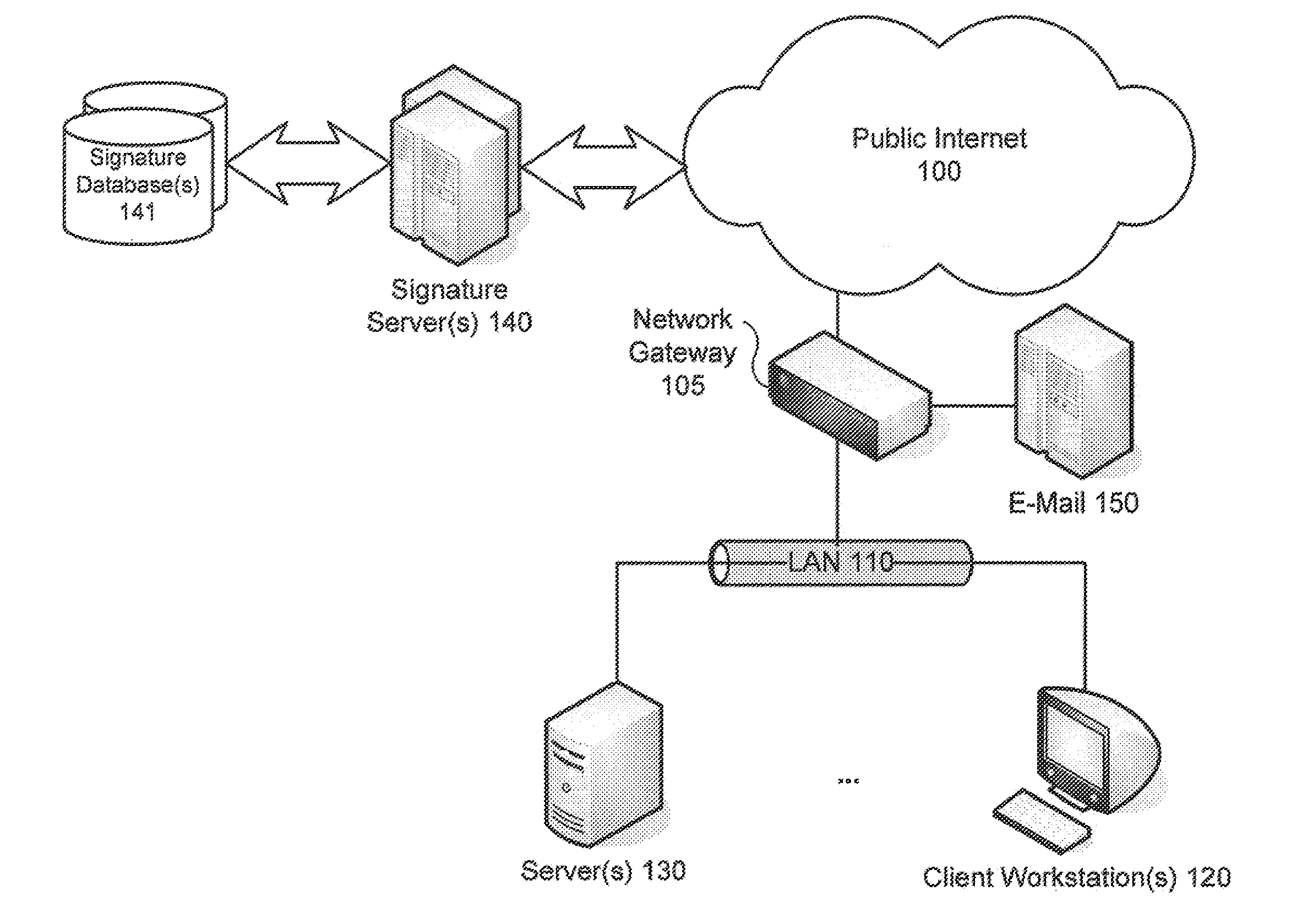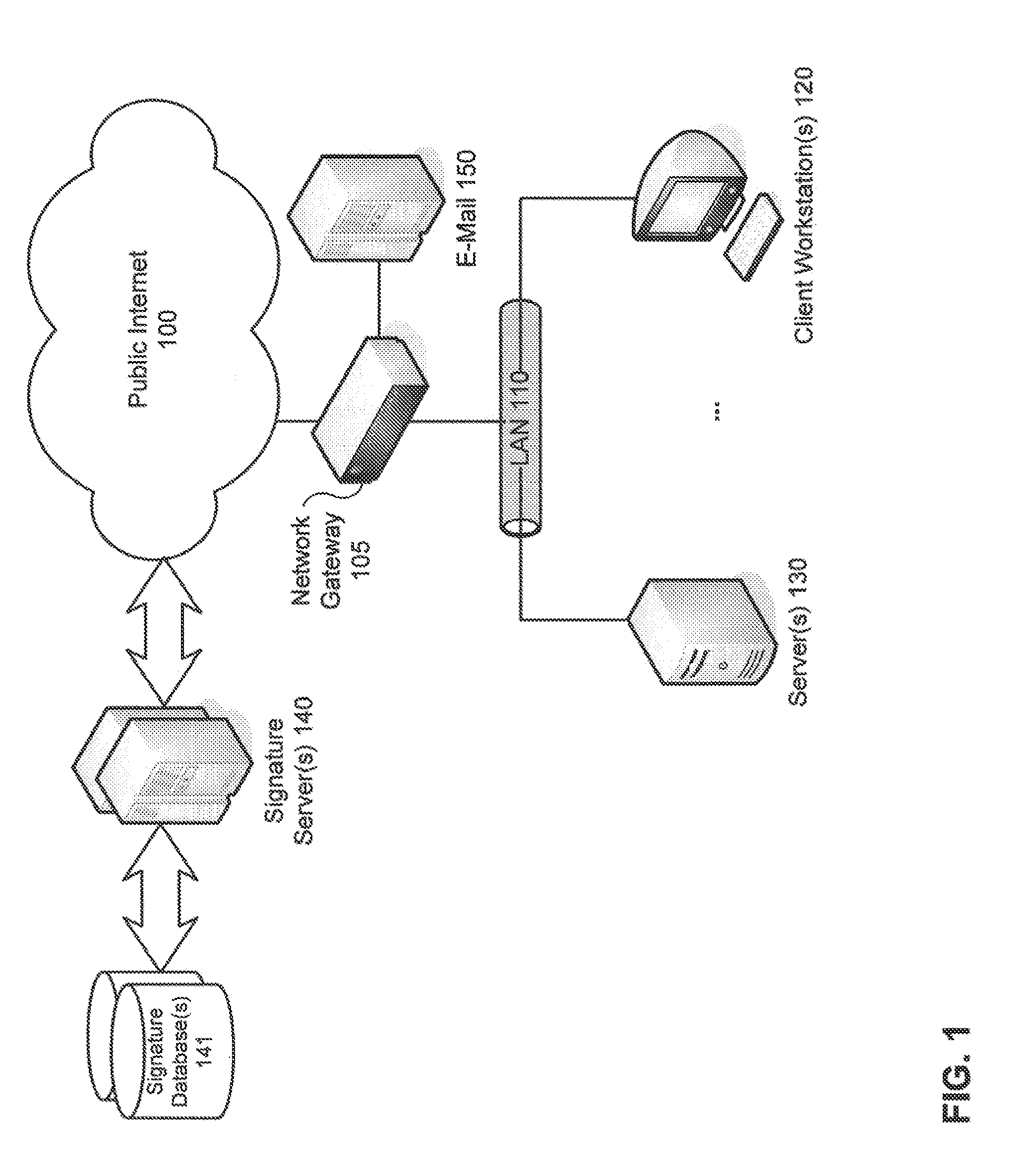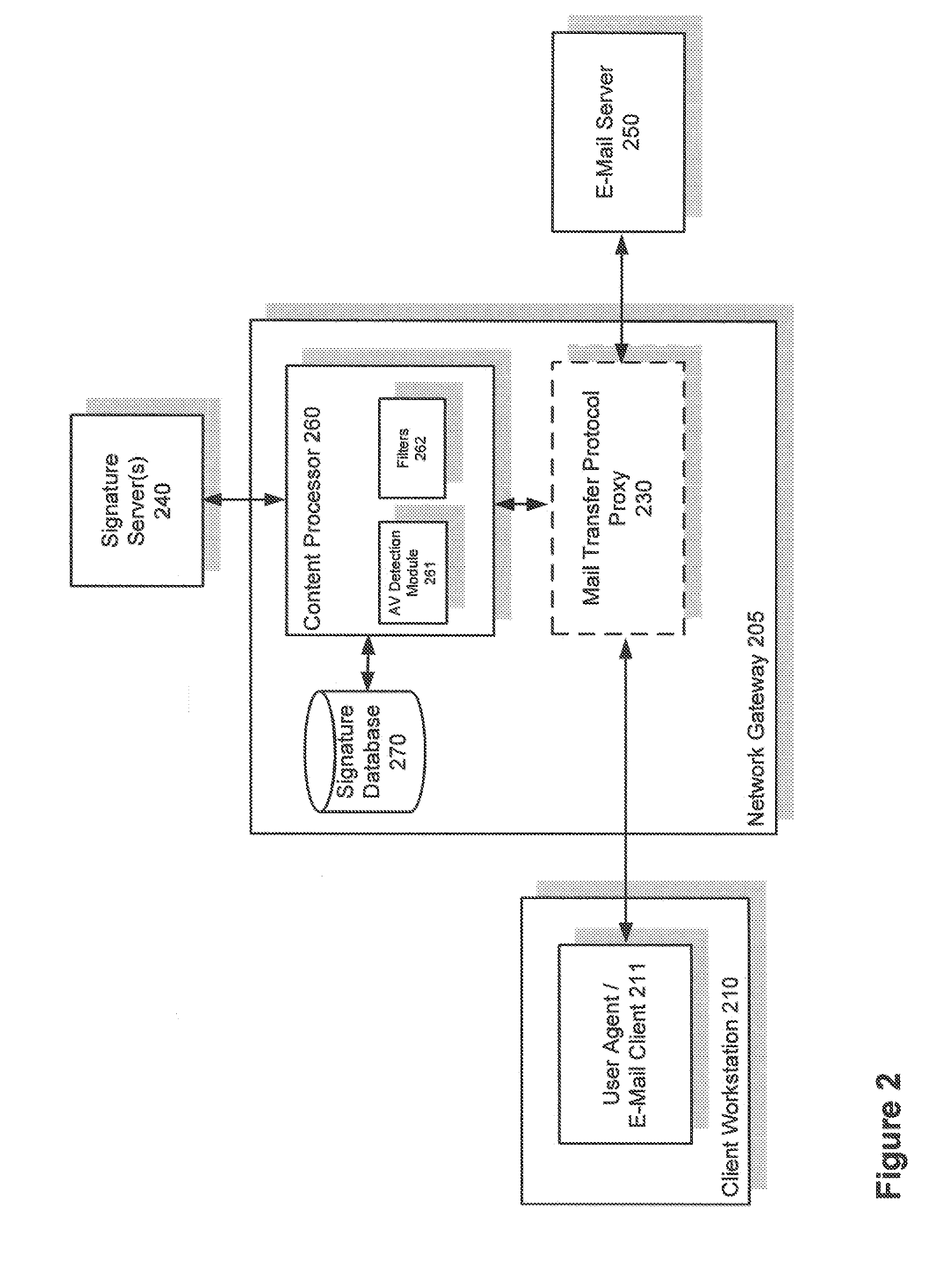Detection of undesired computer files in damaged archives
a technology for archive files and undesired files, applied in the direction of unauthorized memory use protection, data switching networks, instruments, etc., can solve the problems of difficult detection, only on client machines, and only useful gateway products,
- Summary
- Abstract
- Description
- Claims
- Application Information
AI Technical Summary
Benefits of technology
Problems solved by technology
Method used
Image
Examples
Embodiment Construction
[0020]Systems and methods are described for an anti-virus detection module that can detect known undesired computer files in damaged archives that may be encrypted, compressed and / or password-protected. According to one embodiment, a goal is to detect encrypted malware files in archives rapidly and accurately without decrypting, decompressing or otherwise subverting the security features of those files. In order to accomplish this, certain pieces of information contained in the archive header or internal central directory may be extracted and compared with corresponding information for known undesired files. If a match is found, the archive may be blocked or quarantined and a notification may be issued to a user or administrator. In this manner, various problems of the currently used methods are avoided. Detection is accomplished quickly and with certainty. Legitimate files can pass unmolested, and will not be decrypted or their contents directly examined. Another advantage of vario...
PUM
 Login to View More
Login to View More Abstract
Description
Claims
Application Information
 Login to View More
Login to View More - R&D
- Intellectual Property
- Life Sciences
- Materials
- Tech Scout
- Unparalleled Data Quality
- Higher Quality Content
- 60% Fewer Hallucinations
Browse by: Latest US Patents, China's latest patents, Technical Efficacy Thesaurus, Application Domain, Technology Topic, Popular Technical Reports.
© 2025 PatSnap. All rights reserved.Legal|Privacy policy|Modern Slavery Act Transparency Statement|Sitemap|About US| Contact US: help@patsnap.com



